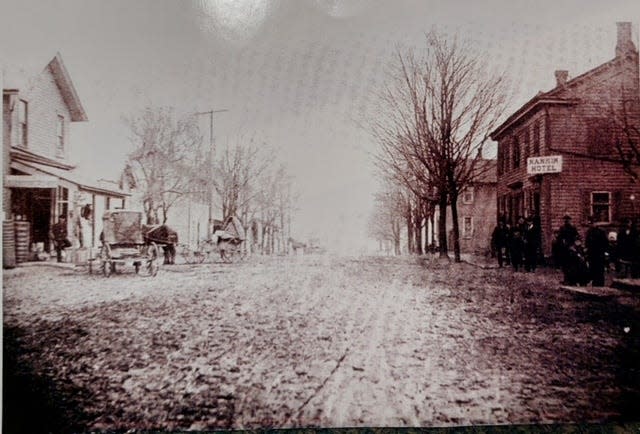Ashland Memories: Nankin was an enterprising small village in late 1800s, early 1900s
Nankin was home to about 300 people in 1884, and the village virtually hummed with enterprise.
The town continued to grow through the turn of the century, and by 1930 it had a population of over 1,000.
In the 1880s, the railroad depot was about a mile east of the village. W.D. Edgar was both the stationmaster and a partner in the tile yard of Edgar and Bowman. There also was a saw mill and lumberyard.
Jacob Kreiger’s general merchandise store carried a bit of everything − dry goods, hardware supplies and ready-made clothing.
Irvin Stentz was the town’s grocer and also traveled the countryside in a produce wagon. He bought eggs and butter from farm wives and sold groceries from the wagon.

Judson M. Norris was the village’s lightning rod man. It was a business that required a good talker − a man both convincing and not easily discouraged. Jud reportedly did well.
The townspeople of the 1880s went to Miss Kit Vance for musical instruction, and she was an accomplished pianist and vocalist in her own right. The town also had a hotel, called the Nankin House, kept by John Weedman.
Small industries in Nankin at turn of the century
Nankin even boasted some small industries. Brunell Stevens Bolles ran the cheese factory in the 1880s, collecting milk from the surrounding dairy farms.
Besides the cheese factory, the village had a cement tile factory sometime after the turn of the century. In 1911, Julius Rockenfelter advertised his cement tile as an alternative to clay tile.
Another industry was the B & G Rubber Company, which started in a couple rooms in the old cement factory around 1919. By1923 they were making 100,000 balloons a day and employed thirty-five people in an around-the-clock operation. G.H. Gault, G.F. Morr, and H.V. Barrett were the officers of the company.

The Nankin school, with Ira Houseman as principal, had about 74 pupils in 1884. The teacher, Miss Belle Long, followed in her sister, Mattie’s, footsteps starting around age 16. Amongst Belle’s young pupils was her younger brother, Harry.
Nankin school burns in 1915; faulty furnace blamed
The old Nankin school was a two-room frame building west of the main street, which burned early in December 1915. A faulty furnace was blamed for the blaze, which could be seen in the night sky from Ashland. The school’s organ and some seats were saved.
In 1918, voters were urged to approve a new, modern building for the district’s 140 students. Supporters noted that when young people were being sent to fight a war “over there,” future youth deserved to be armed with “educational preparedness.”
Nankin’s youth did get their school building, built on the east side of town, where the young people of the community got their education for the next eighty-some years.
In the spring of 1919, two Civil War veterans, David Youngblood and William Davidson, planted a memorial grove of 80 maple trees in honor of the Orange Township veterans who had participated in all the wars of the United States. The memorial grove was dedicated on Memorial Day, 1924.
That same year, Judson Norris, the old lightning rod salesman, donated a soldiers monument, which was placed within the grove and dedicated Sept. 1, 1924. Jud had moved to Ashland in 1900, where he was notable for his public spirit and his financial support of worthy causes, including the Methodist church and Samaritan Hospital.
On Memorial Day 1926, Nankin placed a Minenwerfer gun that was a World War I trophy in the park to stand as another memorial to those who served.
This article originally appeared on Ashland Times Gazette: Nankin was an enterprising small village in early Ashland County

